Expanded clay in landscape design
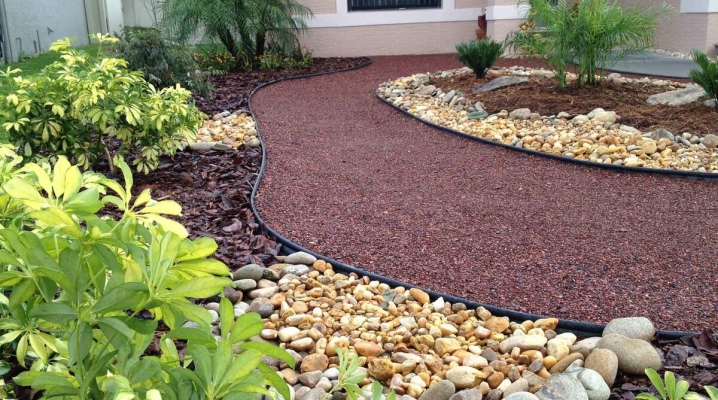
The creation of a spectacular landscape design involves the use of not only plantings, but also a variety of materials. One of these is expanded clay. It has been used for quite a long time among summer residents, and in different situations. So, with expanded clay, you can mulch the beds in the country, and if necessary, it will become a good drainage. However, most often this material is used to decorate the local area.
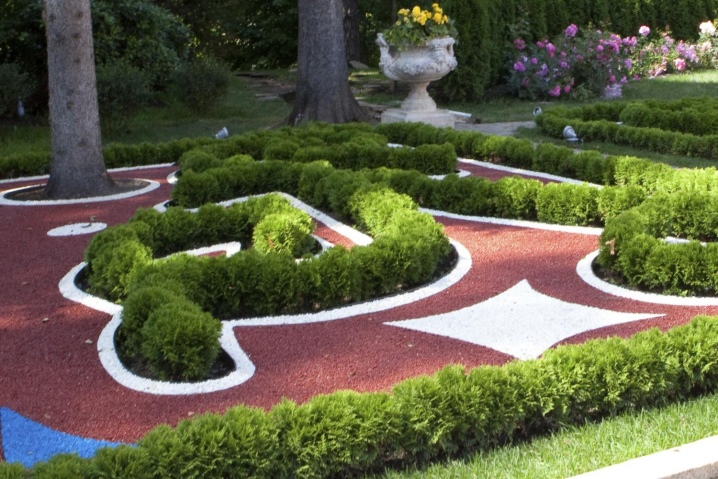
Advantages and disadvantages
Expanded clay is light and porous brown granules, and it is made mainly of clay. At high temperatures, it is fired in special ovens, as a result of which the material becomes smooth on the outside and almost hollow on the inside. Expanded clay granules have different sizes - from 5 to 40 mm in diameter.
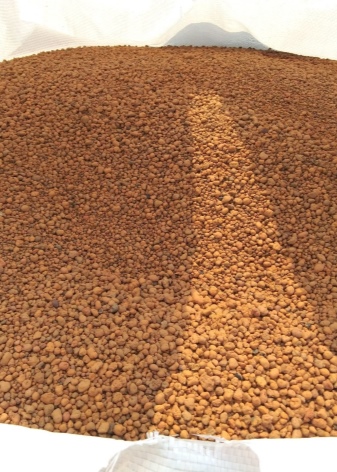
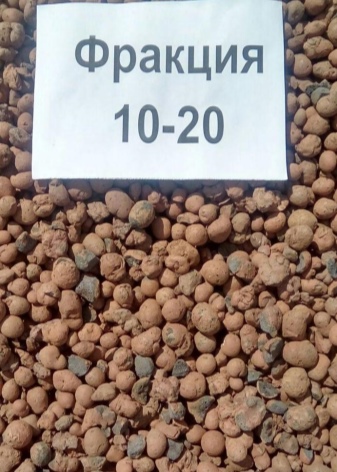
You can buy dried clay both in bulk and packaged in bags.
Ready-made expanded clay granules have many positive qualities. Let's see why gardeners love them so much:
- environmental friendliness: the material is made from a natural, natural product that does not harm the health of people and animals, it is absolutely safe for plants;
- strength: despite the lightness and porosity, the granules are very strong, which means that you can safely walk along the paths or flower beds decorated with them, without fear of ruining the coating;
- resistance to many external factors: expanded clay does not lend itself to the effects of weather, acids, fungus, pests, and it also does not burn;
- aesthetics: the material is attractive in appearance, and over the years it will not lose its original appearance;
- availability: you can find expanded clay in any building or gardening store, and it is sold at a very low price.
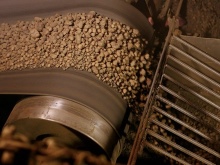
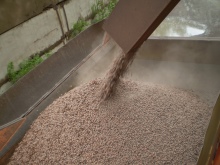

Expanded clay has almost no drawbacks, and those that exist are associated more with the insulation of apartments and houses than with the use in the open air. For example, a wet material dries for a long time, not wanting to give up moisture. When used in apartments, this drawback is felt sharply, but on the site it should not create problems, except that the paths will be wet for a couple of days. A more significant disadvantage is abundant dust formation.
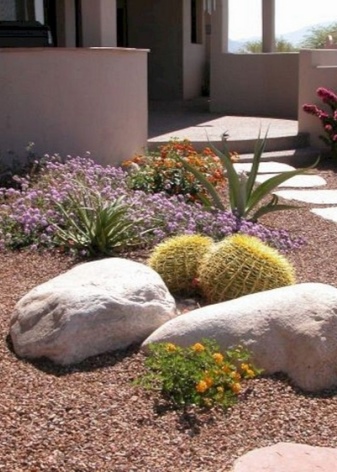
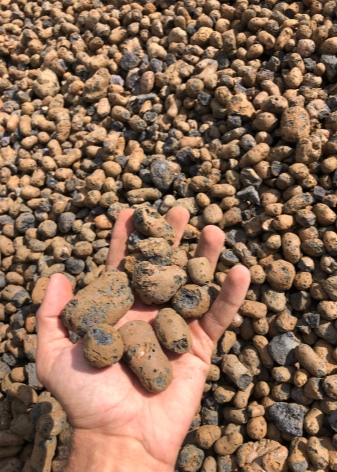
This means that you need to scatter expanded clay on roads and flower beds in a respirator or mask, otherwise dust particles can get into the respiratory tract.
Once scattered, the dust will quickly settle and the material will no longer pose a health hazard.
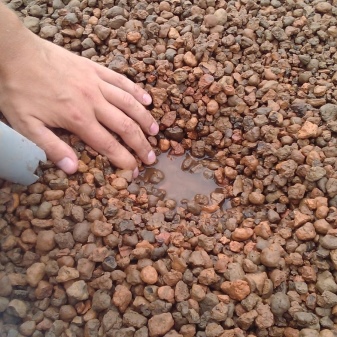
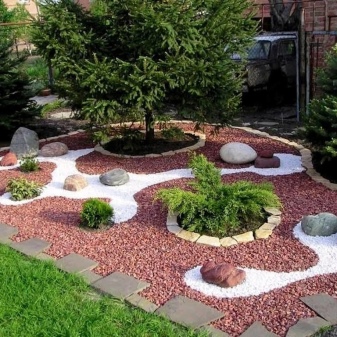
Views
Expanded clay granules can be of several types. All of them are used in the landscaping of the site.
- Gravel. These are small oval stones of different sizes. They can be small, medium and large.
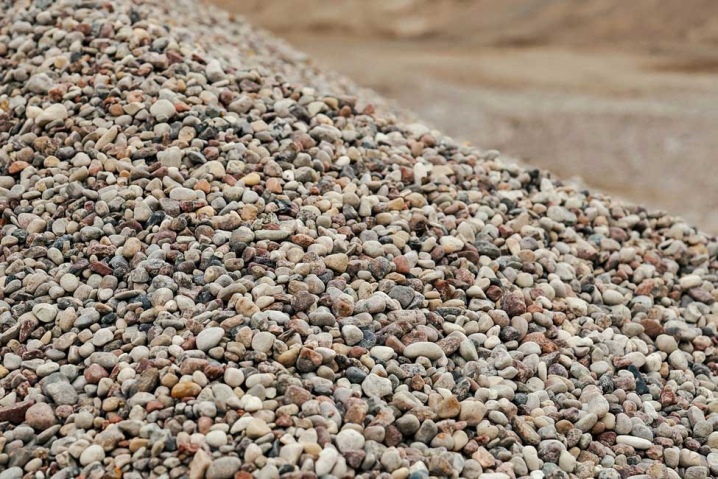
Gravel is most commonly used for backfilling paths.
The oval smooth shape contributes to the decorative appearance and comfortable movement of the owners of the site.
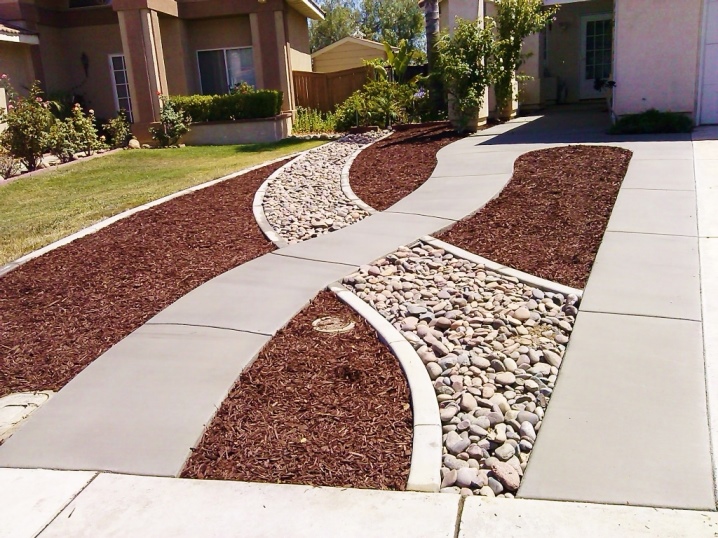
- Crushed stone. This material has the same characteristics as gravel, but in a slightly different shape. Here the granules resemble cubes and have pointed corners.

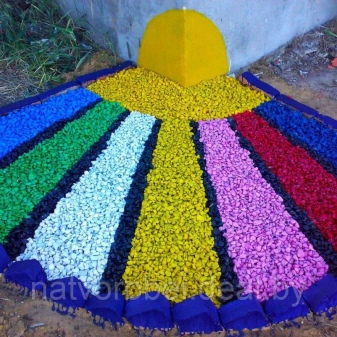
This type of expanded clay is used in flower beds and flower beds, since it is not very convenient to walk on sharp stones.
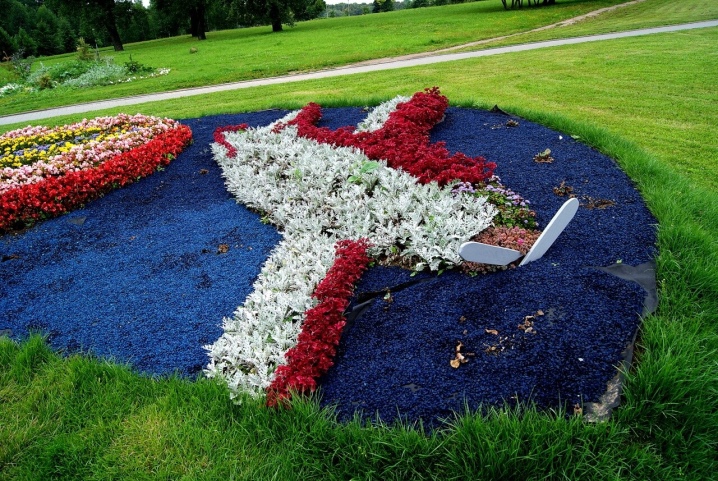
- Sand. In terms of characteristics, it is similar to gravel, but too small - sand granules are up to 5 mm in diameter.
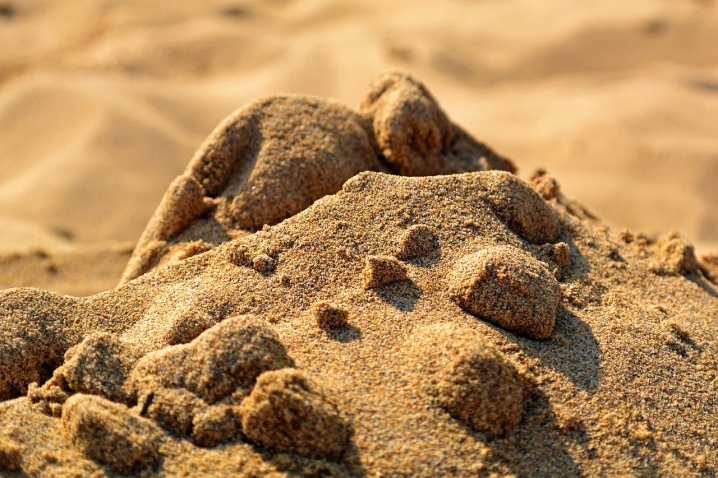
This material is sometimes replaced by ordinary sand on the site, decorating flower beds with it.

How to paint?
Expanded clay mainly has a brown color, less often it is gray, but these colors are not always enough when it comes to the decorative design of the site. That is why multi-colored types of material are increasingly on sale.
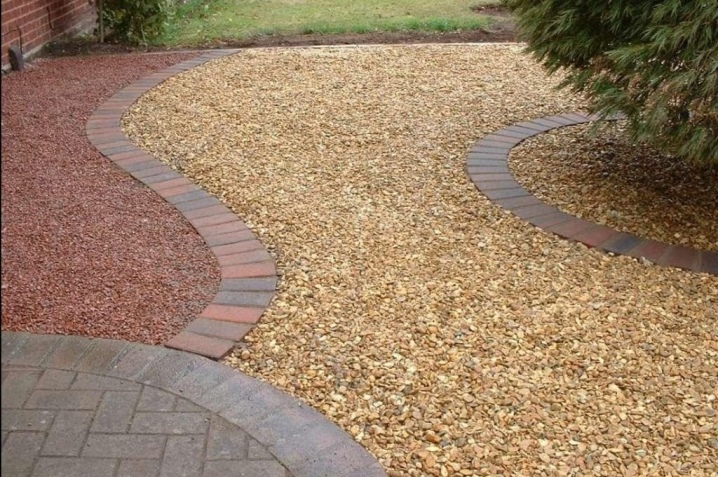
Beautiful and bright granules are sold in hardware stores, and their purchase will be the easiest way to decorate the site.
Those who are not looking for easy ways can paint the granules on their own. However, it must be borne in mind that for this you will definitely need special equipment - a concrete mixer. In addition, it is important to be responsible when choosing paints.
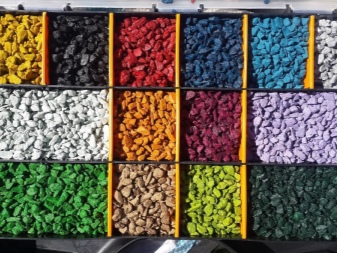
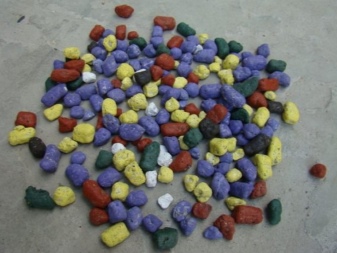
Experts recommend the acrylic version used in construction.
Such paints do not fade, do not deteriorate from frost and heat, do not detract from the natural properties of expanded clay. For 1000 kg of granules, 20 kg of dye will be needed.
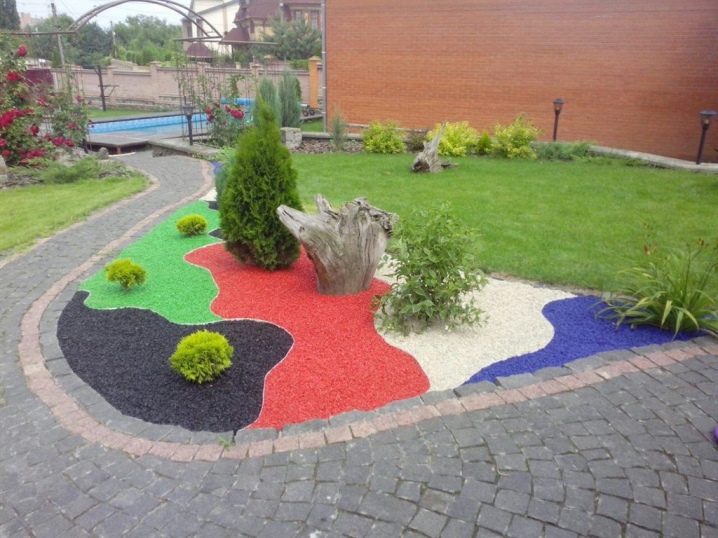
In addition to the above, you will need to take:
- container for liquid, the volume of which is at least 100 liters;
- a sieve in which the granules will be sieved;
- small plastic boxes with cells - they are needed for washing the finished granules.
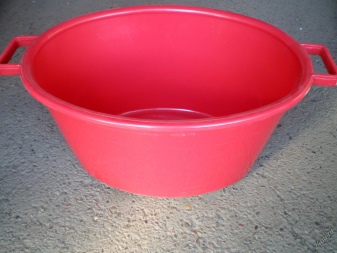
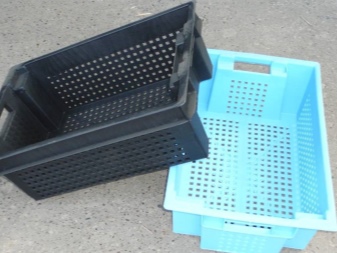
The coloring looks like this:
- expanded clay is sieved through a sieve, dividing into fractions;
- the material is thoroughly cleaned, removing branches, dirt and adhered earth;
- for about an hour the material is dried in the open air, at this time you can prepare water with a dye (the amount of paint required is always indicated in the instructions and depends on the manufacturer and composition);
- after a set time, expanded clay is poured into a concrete mixer, filling the unit by one third;
- paint is poured inside (correct proportions - 30% dye and 70 - granules);
- the machine is started for half an hour, then the quality of the granules is checked;
- if everything is colored evenly, the gravel is laid out for drying in a shady place, if not, the staining process is repeated.
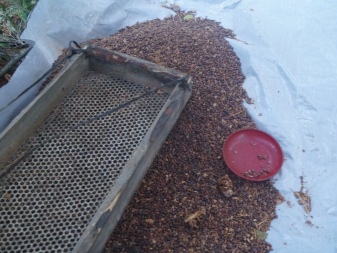
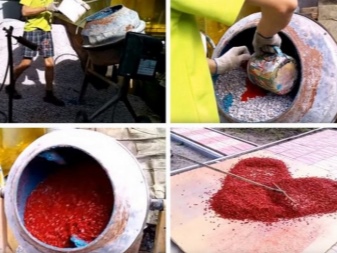
How to use?
There are several options for how to use expanded clay in a summer cottage. Let's consider them in more detail.
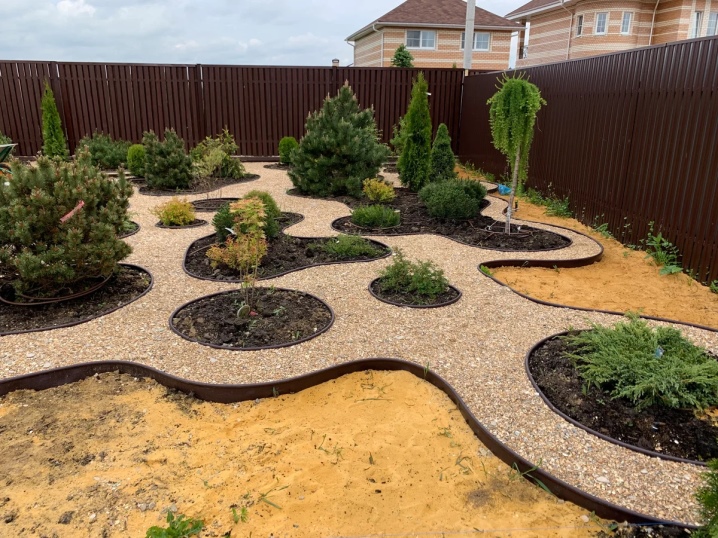
For flower beds and flower beds
Colored expanded clay granules will be an excellent option for ennobling a flower bed, and you can use both small and large fractions. Large ones will effectively fill in the gaps in the flower bed, alpine slide, in the flower garden. Contrasting crop options look interesting, for example, white roses and blue expanded clay.
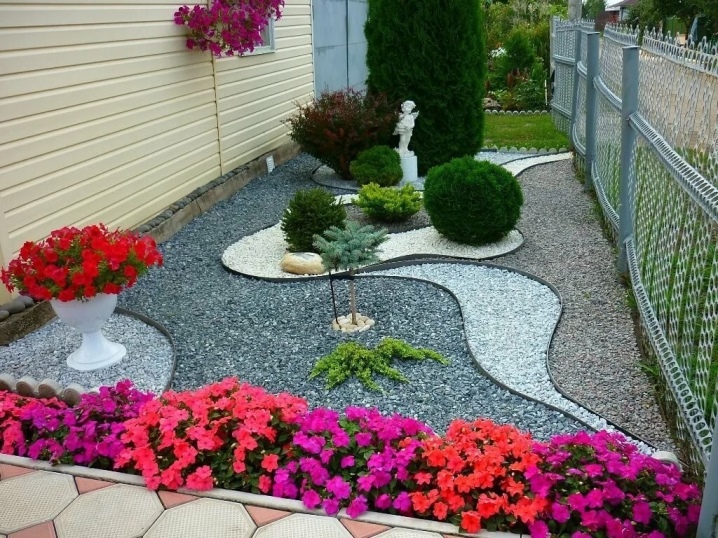
And with the help of a fine fraction or sand, you can even create whole drawings, the simplest of which will be circles, waves, zigzags.
In addition, expanded clay serves as a durable and beautiful design for artificial ponds.
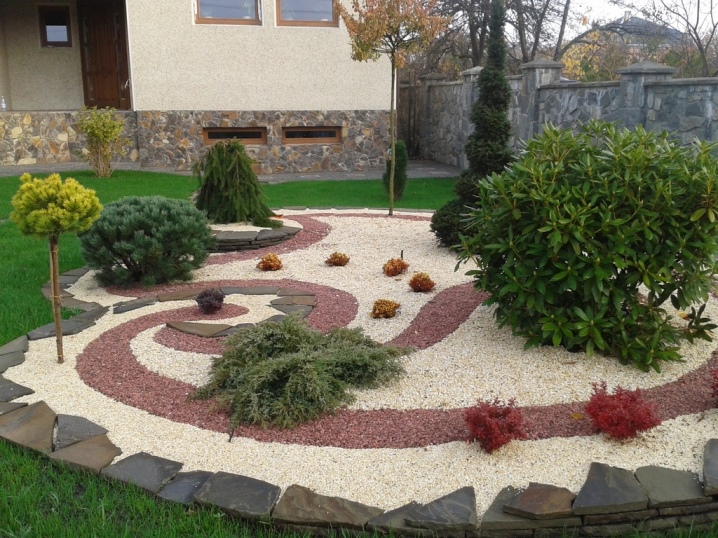
For paths
Expanded clay paths can become a real decoration of the site, especially if colored granules are used. but it must be borne in mind that garden paths completely covered with expanded clay will not be a profitable solution. Everything will look nice at first, but then the material will crumble.

To avoid this, expanded clay is often mixed with concrete mortar, which is easy to make with your own hands.
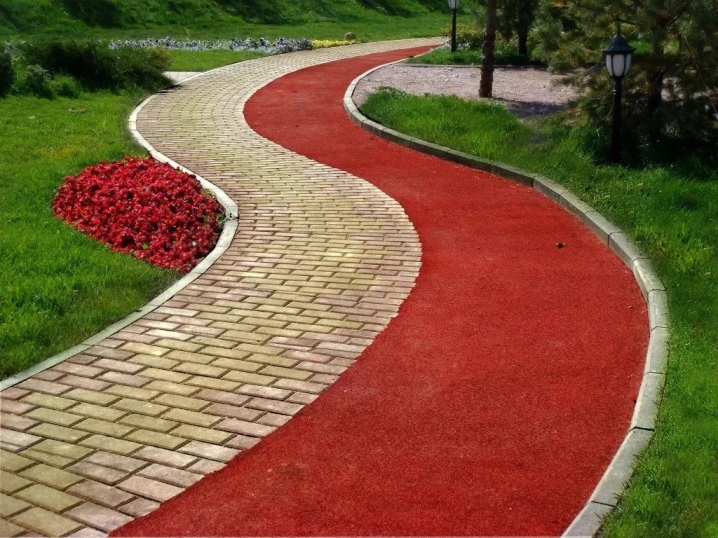
Also, with the help of multi-colored gravel, you can decorate only the edges of the path, and it itself will be made of concrete or any other material. Another use case is laying expanded clay under tiles. For this, a place is being prepared for the path, after which the bottom is covered with geotextiles. Then you need to put expanded clay on top of it, and the next layer is tiles.
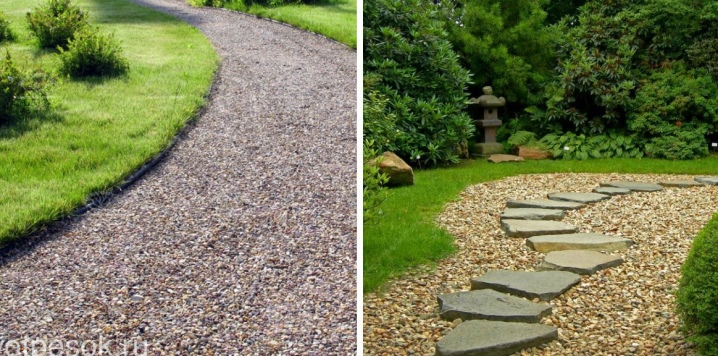
Beautiful examples
The use of expanded clay is a quick and budget way to decorate a site. Several photo examples will make sure of this.
- Flower garden decoration with brown expanded clay. Completion of the project is given by stones that draw the border between the flower garden and the rest of the site.
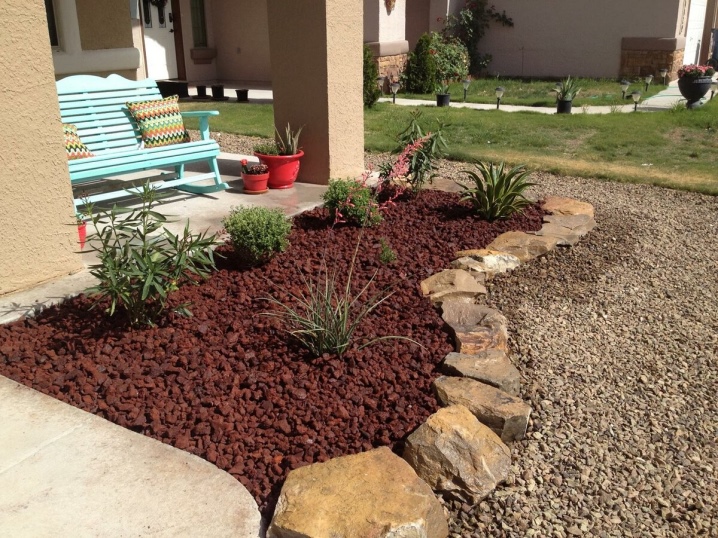
- Large granules perfectly accentuate rounded plants. The colors of the plants and the material contrast, which favorably emphasizes the freshness of the green spaces.
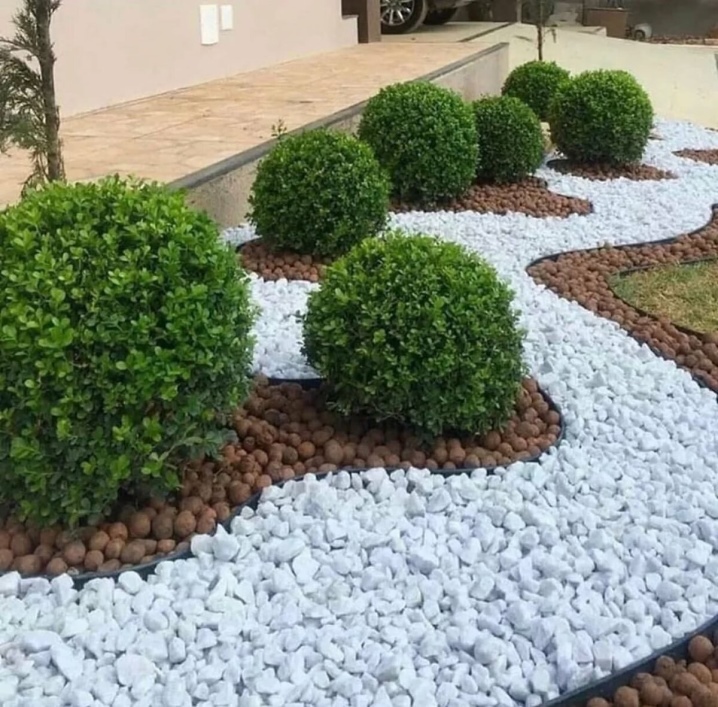
- With the help of expanded clay granules, you can make a zone that will become the accent of the entire site. As, for example, in these photos.
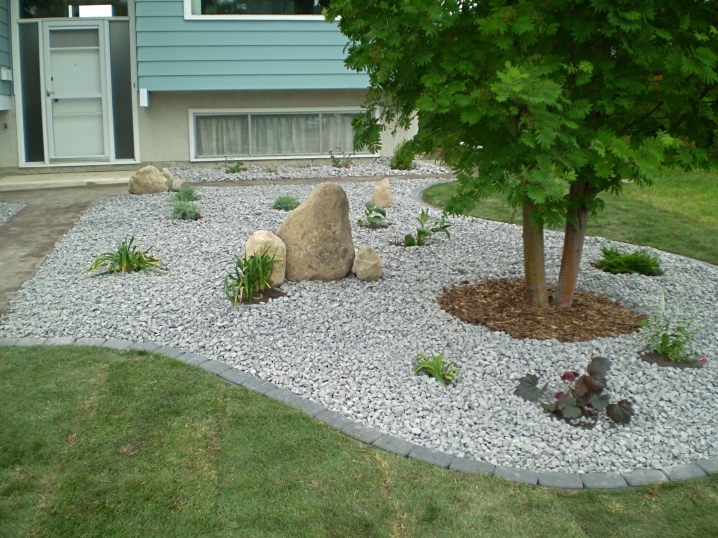
- And here are examples of expanded clay paths. Here, natural material is successfully combined with tiles, which extend the life of the granules.
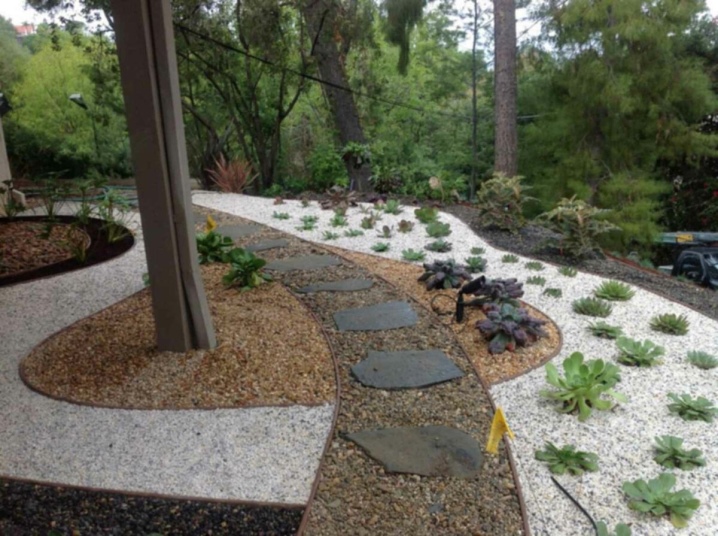
- A very spectacular flower garden with pink backing. This color goes well with circles of wood, lined around the edge.
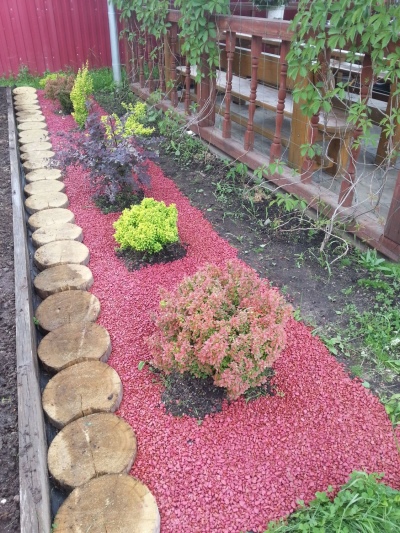
In the video below, an example of using colored expanded clay in the design of a flower bed.



































































The comment was sent successfully.